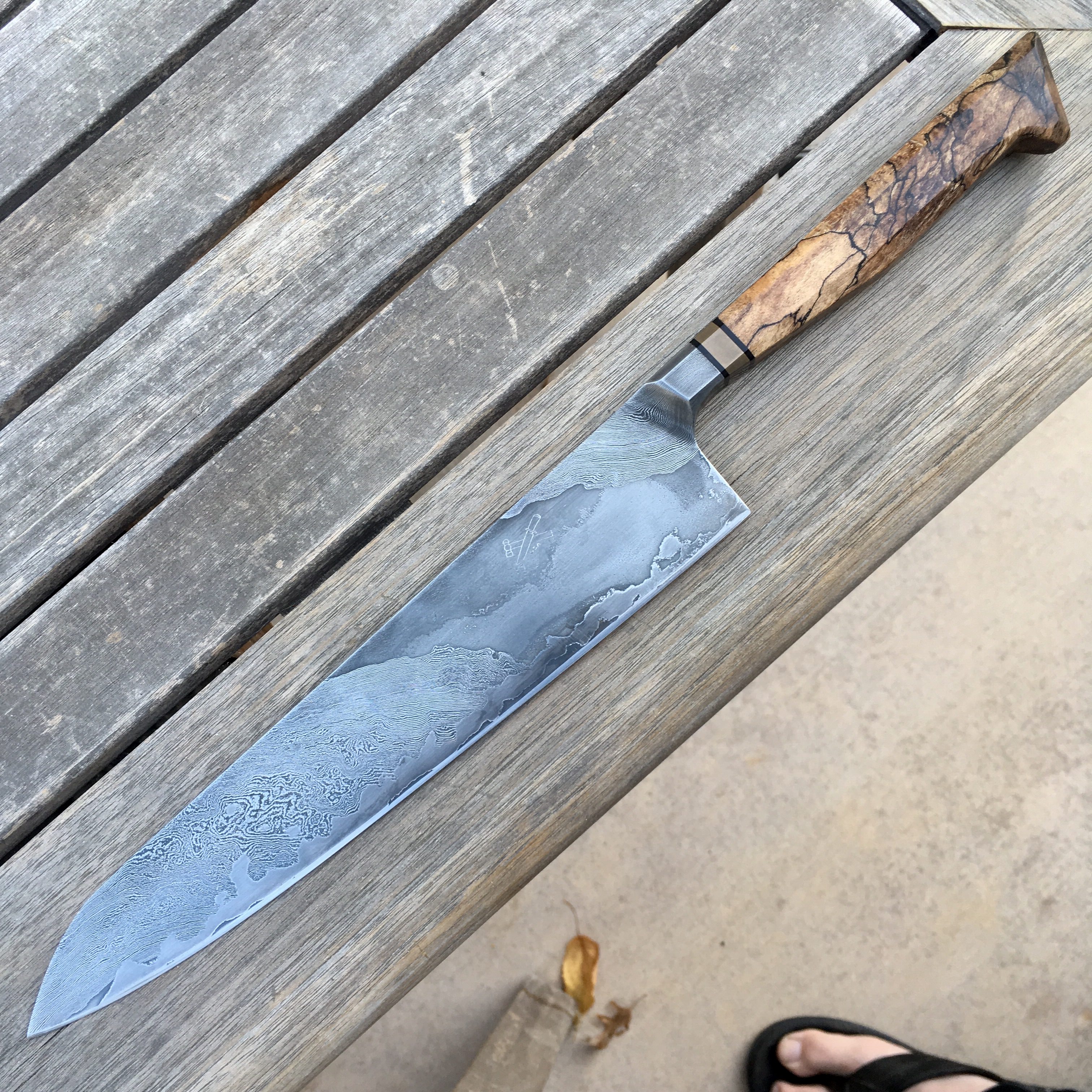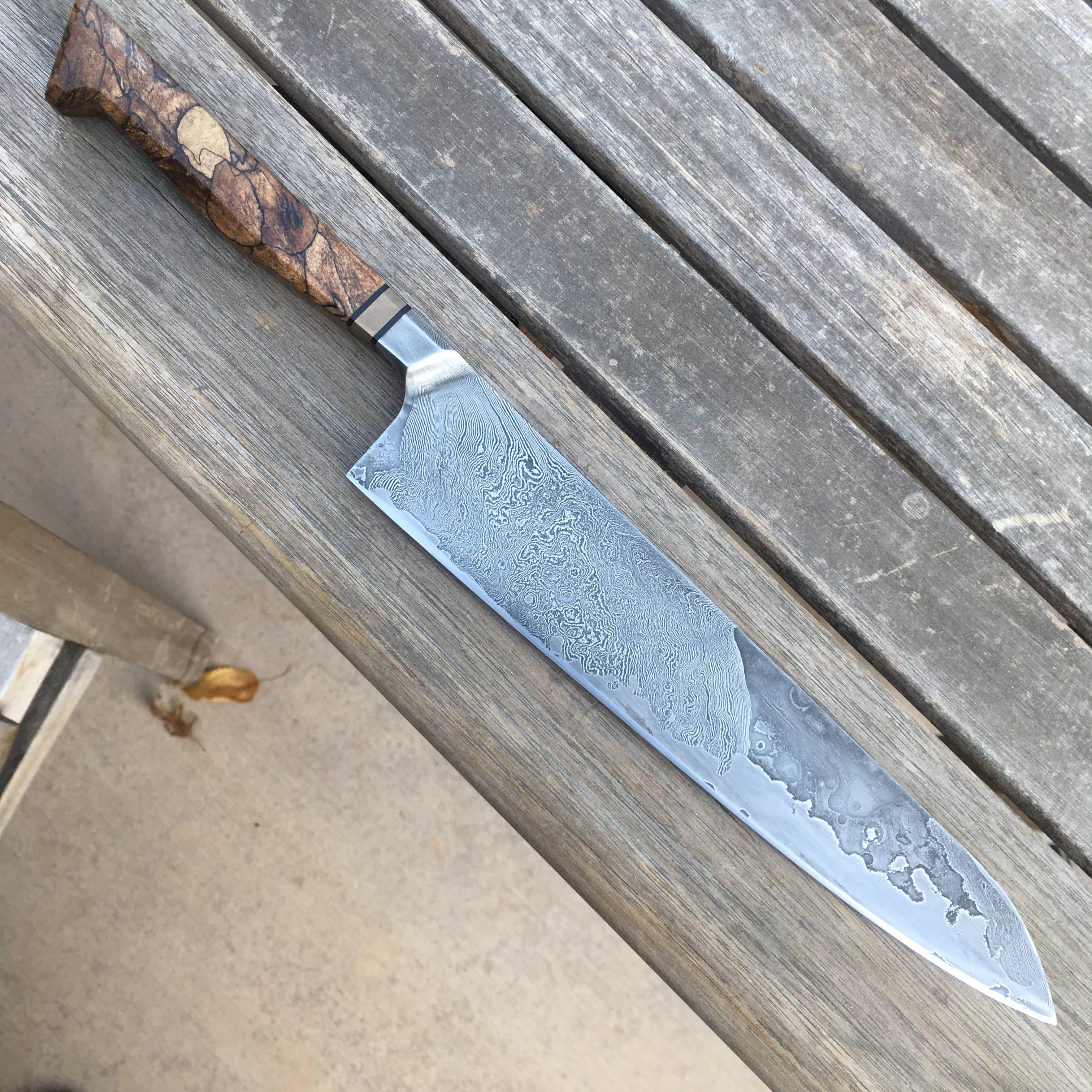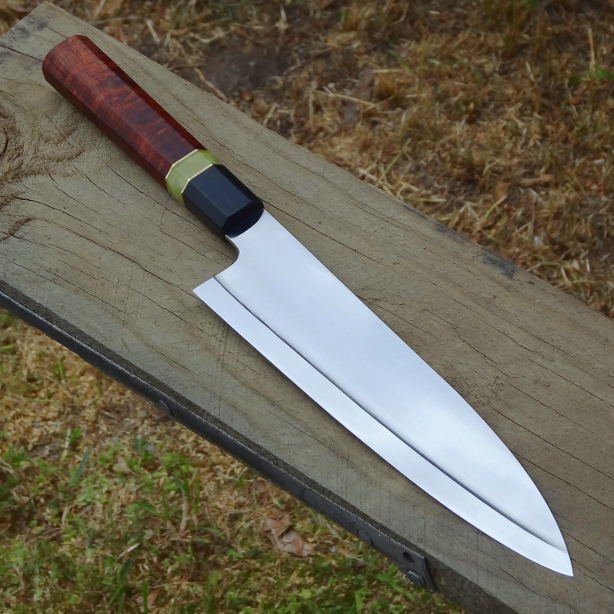banjo1071
Senior Member
- Joined
- Nov 11, 2011
- Messages
- 462
- Reaction score
- 148

yes... i think you are alone here. I've seen this in very high purity non-japanese steels too. Its just as much about polishing as it is a function of how the steel is worked. I'm sure larrin can explain better than i can though.is this actually alloy banding??
if you read the description for white 1/2 etc and blue 1/2 they mention its "purified" or some other crap compared to the lower grades. and this is kind of their top level. and if thats alloy banding I kinda question their ability to produce quality steel. am I alone here? I mean good luck finding those streaks in any uddeholm steel. or sandvik.
Or will you find those streaks in those steels if you polish hard enough too?
You can find banding on sc125 and 1.2519 core steel too (from my knives) just in smaller scale and requires some careful polishing with specific stones to reveal.is this actually alloy banding??
if you read the description for white 1/2 etc and blue 1/2 they mention its "purified" or some other crap compared to the lower grades. and this is kind of their top level. and if thats alloy banding I kinda question their ability to produce quality steel. am I alone here? I mean good luck finding those streaks in any uddeholm steel. or sandvik.
Or will you find those streaks in those steels if you polish hard enough too?
No particular grit. Some knives show it more than others, but for the same knives (the 1.2519 core for the sake of consistency) not a grit but a particular type of stone and method of doing the polish works better. For example with the aforementioned knife the three best stones I have at showing the banding are a Natsuya (clearly mid grit), a Mejiro nagura (probably 5-6K but hard to say), and a Koma nagura (definitely a finer stone). I have other stones that can highlight it or mask it but these are the best, and illustrate the fact that it's not a matter of grit but rather how the stone reacts with the steel + how the resulting surface reflects the light. Never seen it in these mild examples with synthetics but most likely something as dramatic as the banding on an Ashi would come through even with synthetics.thank you valgard and jon. what grit do i need to approach to see this "alloy banding" I have a pretty much every grit shapton up to 12k and then a spyderco UF to top it off.
I'm k9inda disappointed with this new info if true.
I will gladly test this though.
Are those the "clouds" that I hear about? Pretty cool!


Quit playing hard to get.

i think i can die happy now.
mike shindel / blade & hammer 240 mm "great wave" gyuto
a few more pics- https://www.instagram.com/p/Bp8GqXfBnAR/


Newer ku mazaki? The profile appears like the newer jns.

Yeah, this to me hit the “most beautiful knife I’ve ever seen” nail right on the head. I think my newborn is getting jealous. I’ve been coddling the knife almost as much as her. I actually picked it up from Phillip at Rodriguez Butcher Supply. Not sure if he got it from Mike or elsewhere but I don’t think it was ever used.I really love the aesthetics of this knife! Did Mike hang onto it until now or did you pry it off the original buyer?
its not a particular grit (though there are some natural stones that bring it out more... its more that its either a part of how the steel was worked or not. Some of the natural stone fanatics will be able to fill you in better on what stones might work best for that.
Yup, I would have liked to have gotten the first run but I am not complaining.Newer ku mazaki? The profile appears like the newer jns.
Enter your email address to join: